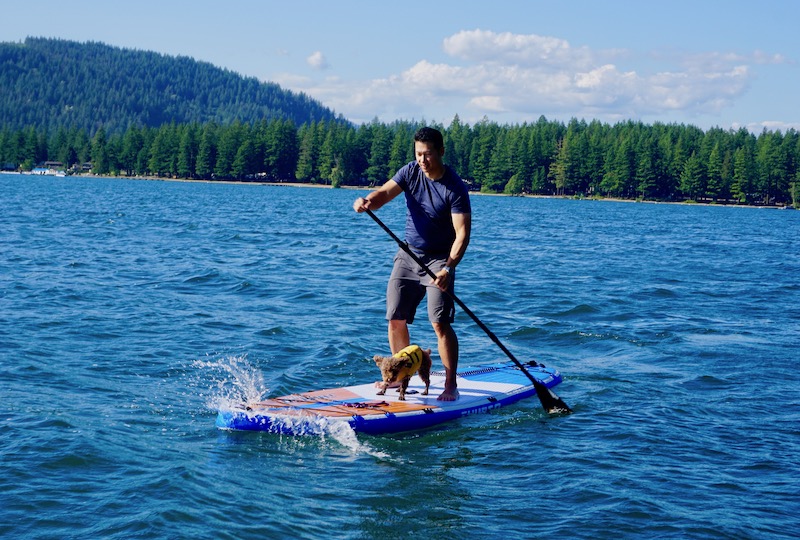
Ever get caught in unexpected strong wind while stand up paddle boarding. If you have you know it is not necessarily a fun experience. In fact it can be downright scary and dangerous.
It can happen to the best of us no matter how much you plan and research the weather and tides.
I have been caught a few times where I had to really power through to keep moving forward.
With white caps spraying up and winds hitting me hard I had to get down low and really power through to make it back to shore. It’s not a good feeling.
Off shore winds, meaning the wind that is blowing from the shore either out to sea or into the lake or river that you are paddling can be unpredictable.
If you are just learning to standup paddle stick close to shore and forgo paddling on those windy days.
However if you do find yourself battling strong winds there are a couple things you can do to make sure you stay on your board and tackle the windy conditions with a little more control so that you get back safely.
1. GET ON YOUR KNEES

If you are having trouble keeping control of your board and moving forward get on your knees and paddle your board canoe style.
Slide your hands down the shaft of the paddle so they are much lower and use your core to power through.
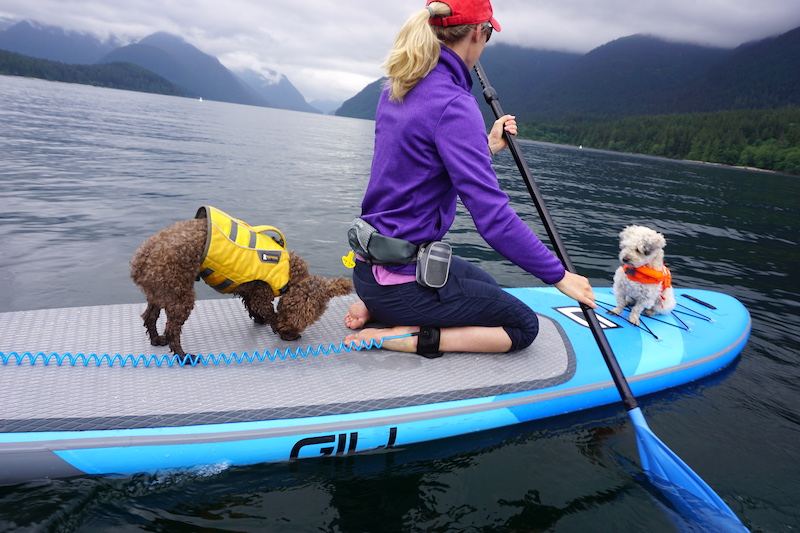
You will have much more control on your knees to tackle the wind and choppy water.
If the swells are hitting your board sideways try and turn the nose of your board at least slightly into the swells so that you ride over them instead of risking being tipped over.
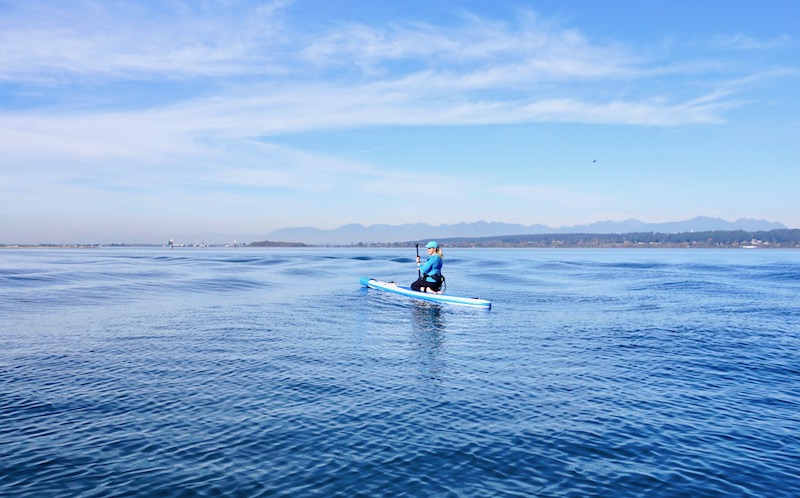
I have been able to tackle most windy conditions by getting on my knees and paddling that way until it is safe to stand up again.
2. LAY DOWN
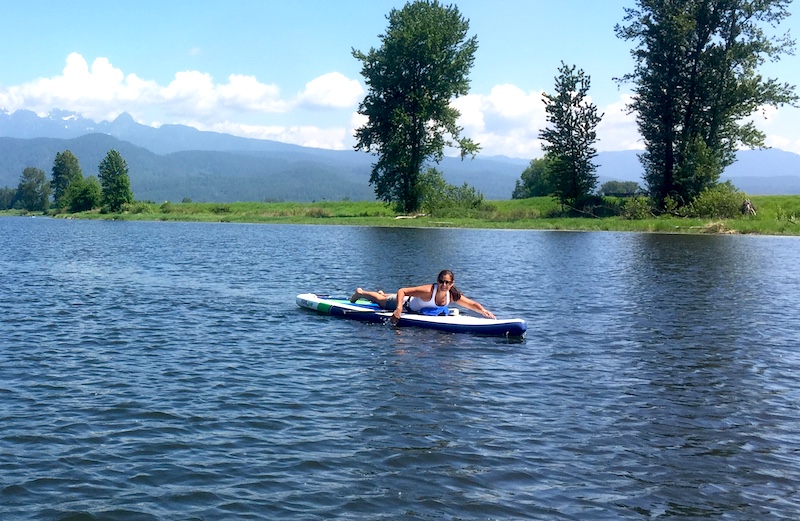
If you find yourself fighting a losing battle and you can no longer move forward even when paddling from your knees then place the paddle underneath your chest and lay down on your stomach.
Paddle your SUP surfboard style with your arms alternating right to left. This will allow you to get below the wind and keep moving forward towards the shore.
This can be a tough go depending on how much distance you have to travel and will tax your upper body strength. It is highly recommended to practice this maneuver so that you are comfortable should you ever have to use it.
PADDLING DOWNWIND
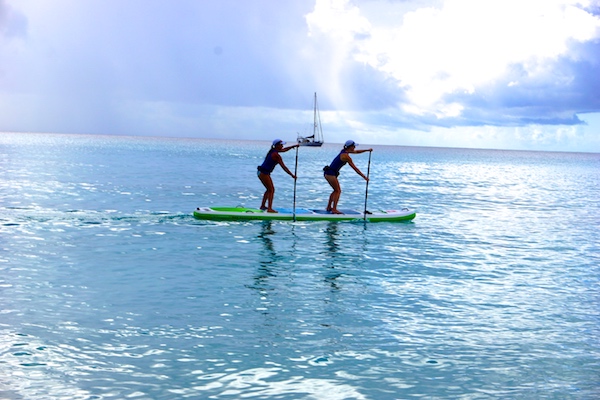
Whereas paddling upwind (into the wind) can be painfully tough, paddling downwind can be extremely fun.
A downwinder is when you paddle from where you launch into the wind and let the wind and waves propel you forward until you reach another location further downwind.
You will need to leave a vehicle at the ending point so that you are able to get back to where you launched.
Typically you will use a good touring paddle board for a downwind paddle. This can be a great way to get out and enjoy a windy day on the water.
Downwinders can be thrilling but also take a bit of practice to get comfortable.
BOARD SIZE
A wider board is going to feel more stable and secure in windy conditions for sure. However it will also take more effort to propel forward and be slower to paddle through wind.
Which size you choose will depend on your skill level and how much weight your board will be carrying.
Regardless of the size of your SUP the above two tips still apply for moving through wind and choppy water.
TOP 5 SAFETY TIPS
Wind or no wind there are always a few safety precautions that can be taken to stay safe on any paddling adventure.
1. PADDLE WITH A FRIEND
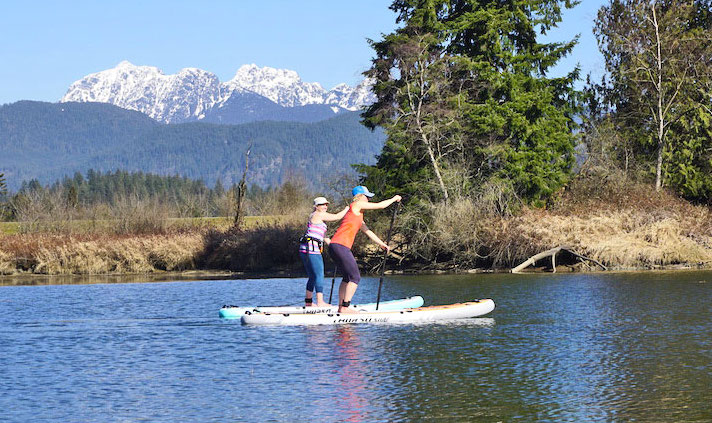
It’s never a bad idea to paddle with a buddy. Not only is it super fun to have a friend along to share the experience with but it always helps to have a second person and board out with you in case anything goes wrong.
At the very least if you do go out paddling alone then let someone know where you will be and what time you expect to be back.
2. WEAR A PFD

In most places it is law to have a personal flotation device with you on your paddle board although you don’t necessarily have to be wearing it.
On calm lakes and rivers you can often store the PFD under the burgees on your board.
However for ocean paddling and downwind adventures it is critical to wear your PFD.
There are SUP specific belt pack PFD’s that strap around your waist that are extremely lightweight and comfortable to wear when stand up paddling.
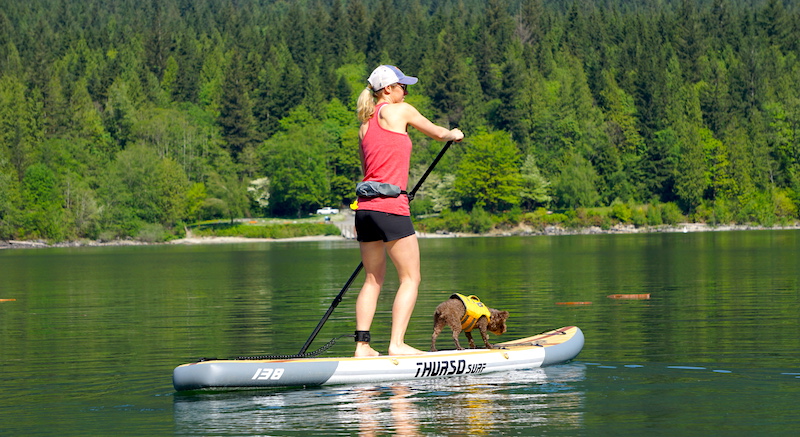
I use the belt pack life jackets for most of my paddling trips. These are my fave PFD’s for stand up paddle boarding.
For long distance ocean paddles further from shore I will often wear a normal lifejacket. My dogs also always stay safe with their own PFD’s when out on my board.
When choosing a PFD use your common sense based on your paddling and swimming experience and comfort level on the water.
3. BRING A CELL PHONE
I don’t know if anyone goes out without their cell phones anymore but having one with you when paddling can be very handy.
I’ve lost not one but TWO iPhones by dropping them in the water while taking a picture while out on my board.
So I recommend bringing one with you but don’t be like me (or you’ll likely never hear the end of it from your partner or friends either) – Keep your cell protected in a dry bag or waterproof case at all times. 🙂
If an emergency happens being able to call for help is key.
4. WEAR A LEASH
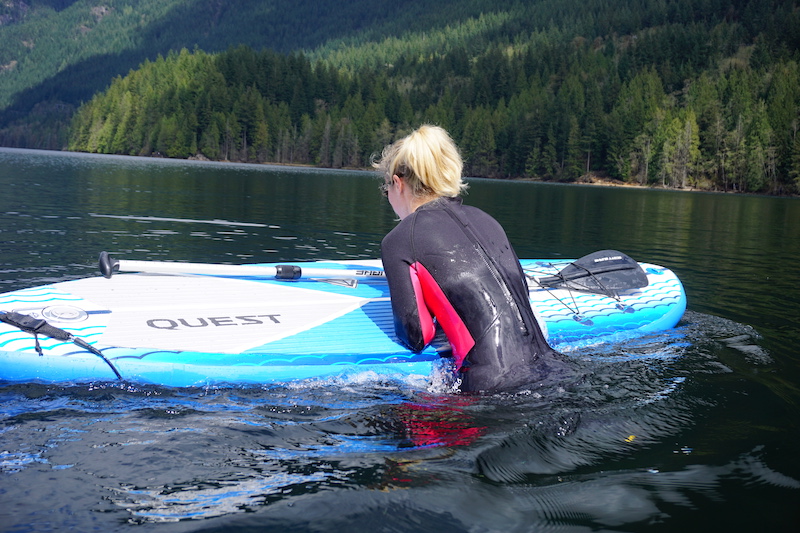
A SUP leash is super important to wear especially in windy conditions.
If you fall off your SUP the leash keeps your board from being swept away.
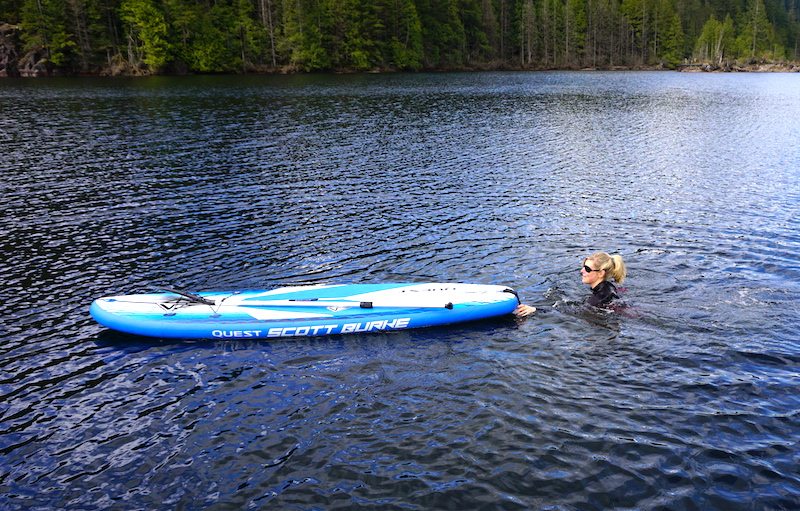
Regardless of how strong of a swimmer you are there’s nothing you can do if your board gets carried off with the wind and waves.
A leash could save your life!
5. DO YOUR RESEARCH
Knowing the area where you will be paddling is very important.
Do your research before you go, check the weather and know the tides.
There are certain lakes near me for example that I know get really windy in the afternoon.
I either plan for that wind or only go there in the morning when the water is calm.
Knowing the area can not only help you stay safe but also be helpful in knowing your route when exploring a new area.
However even with the best of research it is important to be observant of your surroundings.
Watch the way the trees are blowing, the way the water ripples and talk to other paddlers.
Being aware of the landscape around you can make all the difference in having a super fun outing.
GO EXPLORE
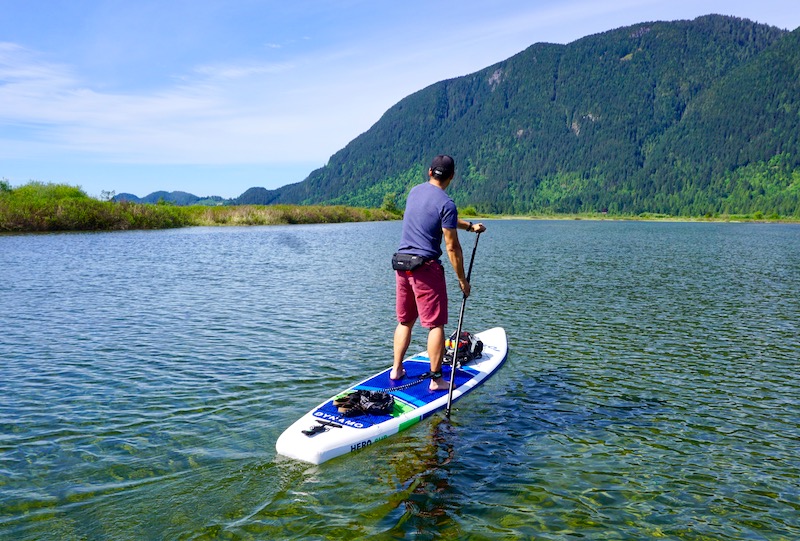
Wind is often unavoidable but that doesn’t mean you necessarily have to leave the paddle and board at home.
Use the above tips to plan a safe SUP trip and tackle heavy wind effectively when necessary.
Exploring different areas by SUP can be an awesome experience. Be smart, stay safe but get out there and explore.
Happy Paddling!
 Travel Guide For Peru
Travel Guide For Peru Video: Epic Ride With C4 Waterman ISUP’s
Video: Epic Ride With C4 Waterman ISUP’s Types of Stand-Up Paddling
Types of Stand-Up Paddling Inflatable SUP’s Under $800
Inflatable SUP’s Under $800





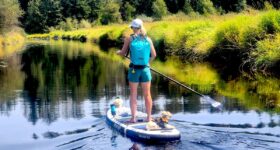


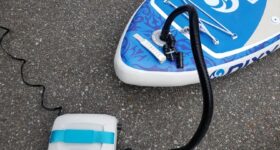
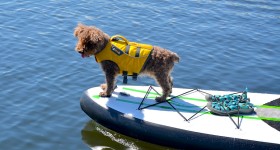

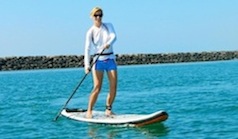
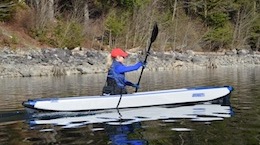
Speak Your Mind